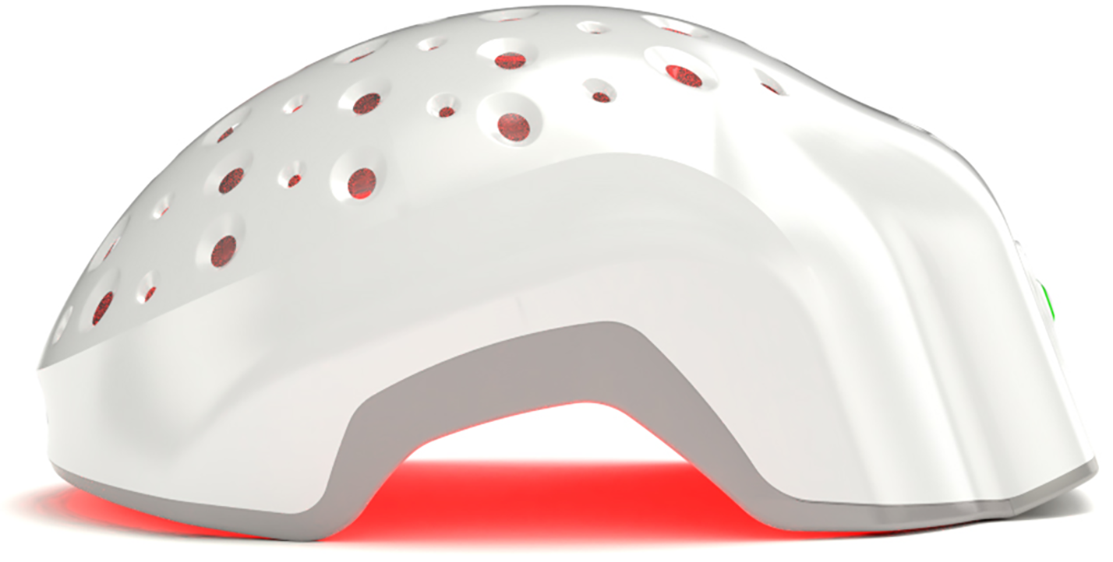Hair loss in women is often accompanied by unique challenges and they tend to keep their struggles private. Combined with societal expectations, this can make hair loss especially damaging to a woman's self-esteem, often evoking feelings of isolation and even depression.
Yet, female hair loss is more common than many realize, affecting a significant number of women at some point during their lives. Women also face distinct causes of hair loss which differ from those seen in men.
In this guide, we’ll explore the various causes and symptoms of hair loss in women, along with practical tips on prevention and treatment.
What is hair loss in women?
Hair shedding is a normal part of the hair growth cycle, with most women losing between 50 and 100 strands daily. As old hairs fall out, new ones take their place. However, when this natural cycle is disrupted, i.e., where more hair falls out than grows back, it leads to noticeable hair loss.
Women experience three main types of hair loss:
1. Androgenetic alopecia(female pattern hair loss):
This results in gradual thinning, primarily at the crown and sides of the head, and women will often notice that their part line starts to get wider due to thinning.
2. Telogen effluvium:
A condition where more hair follicles enter the resting (telogen) phase than usual, leading to increased shedding.
3. Anagen effluvium:
This type is triggered by medications which damage active hair follicles.
What are the symptoms of hair loss in women?
Symptoms of hair loss in women can vary, but some common indicators include noticing more hair falling out than usual on a daily basis. For instance, you may begin to see visible patches of thinning or missing hair, particularly where the part on the top of your head starts to widen.
Another telltale sign is when your scalp becomes more visible through your hair. For example, women experiencing hair loss often find their ponytails becoming thinner, as less hair is available to tie up. Additionally, you might feel your hair becoming more brittle, with strands breaking off more easily than before.
What causes hair loss in women?
There are several causes of hair loss in women, including:
- Damaged hair follicles: Often caused by the overheating of hair due to usage of curling and straightening irons and hair dryers, resulting in weakened strands.
- Changes in eating habits: Rapid weight loss or restrictive diets can deprive your body of essential nutrients, affecting hair growth.
- Stress: High levels of stress, particularly chronic stress, can disrupt the natural hair growth cycle, leading to increased shedding.
- Chemical hair treatments: Overuse of coloring(toning), straightening, or perming can damage hair follicles and cause thinning.
- Medical treatments: Chemotherapy and radiation therapy can result in significant hair loss due to their effects on active hair follicles.
- Underlying health conditions: Issues like an abnormal thyroid or a vitamin D deficiency can lead to hair thinning or loss.
- Hormonal changes: Major life events such as pregnancy, post-pregnancy, or menopause can cause shifts in hormone levels that affect hair growth.
- Medications and supplements: Certain prescriptions, like heart disease medicines and antidepressants can contribute to hair loss.
- Genetic predisposition: A family history of hair loss increases the likelihood of experiencing it yourself.
How is hair loss in women treated?
Fortunately, there are many ways to treat hair loss in women. These include:
- Reducing stress: Incorporating stress-reducing activities, like regular exercise and therapy, can help prevent further hair loss.
- Managing underlying health conditions: Treating issues such as thyroid disorders or nutrient deficiencies can address the root cause of hair loss.
- Avoiding harmful hair products: Steering clear of chemical treatments alongside harsh styling products and shampoos containing harmful ingredients can strengthen hair follicles.
- Maintaining a healthy diet: Ensuring your diet is rich in essential nutrients supports hair growth, as well as overall health.
- Limiting sun exposure: Protecting your scalp from sunburn helps prevent further damage which can result in hair thinning.
- Changing your hairstyling routine: Avoid heat styling and tight hairstyles that pull on the hair and damage follicles.
- Taking medications: Options like minoxidil (Rogaine®) are effective for many women, though finasteride (Propecia®) should be avoided by those who are pregnant or planning to become pregnant.
- Hormone therapy: Treatments like birth control pills or hormone replacement therapy can help regulate hormones contributing to hair loss.
- Quitting smoking: Stopping smoking improves hair health and decreases the risk of hair thinning.
- Laser phototherapy: Low-level light therapy can stimulate hair growth while enhancing the effects of other treatments. Most of the women are getting into LPT due its high effectiveness for hair growth.
How Theradome helps prevent hair loss in women
Many women view hair loss as an inevitable part of aging, often resorting to coping strategies like wearing head coverings, wigs, or opting for shorter hairstyles. While these solutions can offer a boost in confidence, advancements in modern technology have introduced more effective ways to combat hair loss in women.
One such innovation is the FDA-cleared Theradome PRO LH80 laser hair growth device. It stands out as the only at-home laser treatment that provides full-scalp coverage by targeting an area of 582 cm² with a consistent, therapeutic energy dose. When used for just 20 minutes, twice a week, it delivers an optimal energy dosage of 6 J/cm², which is essential for stimulating hair follicles and promoting thicker hair growth.
With Theradome, women have a proven, non-invasive solution to rejuvenate their hair. Don't wait for hair loss to progress - take control with the Theradome laser helmet and start your journey to fuller, healthier hair. Make the smart choice for your hair’s future and regain your confidence today.






















